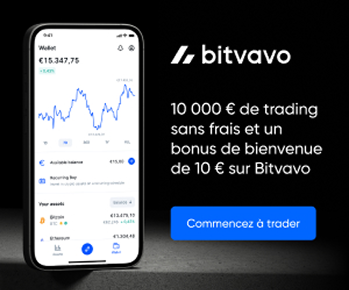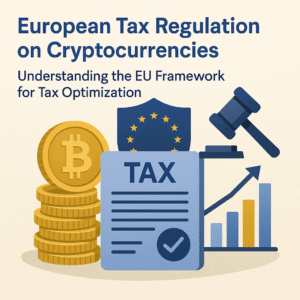Lisk Price: Full Analysis, How It Works, and How to Invest
Introduction & SEO Hook
Lisk (LSK) is a cryptocurrency focused on building decentralized applications (dApps) through customizable sidechains written in JavaScript. This comprehensive guide breaks down how the project works, its evolution, real-world use cases, and long-term investment potential. You’ll explore the technical specifics of Lisk, its unique use cases, development history, and—most importantly—how to invest in Lisk with confidence. Follow this full analysis to understand the key factors affecting Lisk’s price, its growth potential, and how to safely buy and store LSK.Key takeaways
Key Takeaways
- Short-term volatility typical of altcoins, driven by the broader dApp market.
- Key influencing factors: SDK development, developer adoption, regulatory environment.
- Long-term growth potential via the rise of Web3 and JavaScript-based dApps.
- Unique positioning versus Ethereum, Polkadot, or Cosmos thanks to JavaScript sidechains.
What Is Lisk (LSK)?
Lisk (LSK) is an open-source cryptocurrency and blockchain platform designed for building decentralized applications through modular sidechains coded in JavaScript.Core Purpose
Lisk aims to democratize blockchain development by offering a full Software Development Kit (SDK) that allows any JavaScript developer to easily create their own independent and interoperable blockchain.Context & Position in the Ecosystem
Lisk sits at the intersection of two major trends: the rise of dApps and the push to make blockchain more accessible to mainstream developers. While Ethereum requires learning Solidity, Lisk uses JavaScript—a universal language in web development. Since its launch, Lisk has aimed to solve blockchain’s development complexity by simplifying the process without compromising on security, scalability, or interoperability. The project has attracted a strong community of developers, open-source contributors, and investors.Platforms to buy lisk
How Does Lisk Work?
Lisk features an innovative architecture based on interoperable sidechains designed to host specific dApps without congesting the main blockchain.Technical Architecture
- Mainchain: Records LSK transactions and serves as the general security layer.
- Sidechains: Each dApp runs on its own customizable blockchain.
- Consensus: Uses Delegated Proof of Stake (DPoS), ensuring high transaction speeds and community governance.
- EVM Compatibility: Not natively supported, but bridges are under development for cross-chain functionality.
Technical Specifics
- Lisk SDK: Lets developers build sidechains with preconfigured modules (identity, consensus, tokens, etc.).
- JavaScript/TypeScript: Accessible to millions of web developers worldwide.
- Interoperability: Currently under development to enable value and data transfers between sidechains and external blockchains via the Lisk Interoperability Protocol.
Token Utility (LSK)
- Used to pay transaction fees on the main network.
- Enables staking for governance (voting for delegates).
- Used for payments within the ecosystem (services, dApps, etc.).
4. Project History and Origins
Lisk was launched in 2016 by Max Kordek and Oliver Beddows, two well-known figures in the European blockchain space. It quickly gained visibility thanks to a major ICO.Key Milestones
- May 2016: Successful ICO (raised 14,000 BTC)
- 2017: Rebranding and platform launch
- 2018: SDK Alpha release
- 2020: Migration to a new blockchain engine
- 2023–2025: Acceleration of interoperability and cross-chain compatibility developments
Origin
The project is based in Switzerland and managed by the Lisk Foundation, headquartered in Zug (a crypto-friendly Swiss canton). To better understand the fluctuations of the lisk price, visit our page on Lisk Price: Full Analysis, How It Works, and How to Invest – Cointobuy Find Best CryptoFounders and Team
Founding Team
- Max Kordek – CEO of Lightcurve (Lisk’s core development company), a crypto entrepreneur focused on blockchain accessibility.
- Oliver Beddows – CTO, expert in software architecture and passionate about open-source frameworks.
What Makes [Nom cryptomonnaie] Unique?
Lisk’s Unique Features
Real-World Use Cases
Lisk offers an ideal environment for a wide range of decentralized applications:- DeFi Applications: Each project can launch a dedicated sidechain, avoiding network congestion.
- Online Voting Systems: With built-in identity modules, Lisk supports enterprise or civic voting solutions.
- NFT Marketplaces: Developers can build NFT platforms with independent business logic on custom sidechains.
- Supply Chain Tools: Immutable event recording, auditability, and smart contract automation via JavaScript.
Unique Value Proposition
Lisk stands out for its open-source JavaScript SDK, which lowers the barrier to entry for blockchain development. Unlike Ethereum or Solana, Lisk doesn’t require learning a new programming language, attracting a much broader pool of developers. The sidechain model offers:- Horizontal scalability: Each sidechain operates independently.
- Mainnet stability: Errors in one dApp don’t affect the entire network.

Comparison With Other Projects
| Project | Language | Blockchain Type | Consensus | Primary Use Cases |
| Lisk | JavaScript | Sidechains + Mainnet | DPoS | Custom dApps |
| Ethereum | Solidity | Monolithic | PoS | DeFi, NFTs, generic smart contracts |
| Polkadot | Rust/Substrate | Parachains | NPoS | Interoperability, Web3 |
| Cosmos | Go | Interoperable Zones | PoS | dApps, finance, blockchain gaming |
Conclusion and Future Outlook
Lisk offers a pragmatic vision of blockchain: providing a robust, accessible, and modular environment for developing decentralized applications. Thanks to its JavaScript SDK, sidechain architecture, and DPoS governance, Lisk is well positioned to benefit from Web3 adoption. Medium-term success will depend on Lisk’s ability to attract a critical mass of developers and high-value projects. The upcoming launch of full cross-chain compatibility will further strengthen its ecosystem appeal.
SEO-Ready FAQ
What is the Lisk (LSK) token used for?
LSK is used to pay transaction fees, participate in governance through staking, and interact with dApps within the Lisk ecosystem.Is it a good investment?
Lisk shows promising long-term potential, particularly due to its ease of development and JavaScript-based approach. However, like all crypto assets, it remains a speculative investment.How is it different from Ethereum?
Unlike Ethereum, Lisk uses JavaScript instead of Solidity, offers independent sidechains, and relies on a DPoS consensus model, resulting in better scalability.Where can I store LSK tokens?
You can store your LSK on Ledger (via Lisk Desktop), Trust Wallet, or the official Lisk wallet.Is the project secure?
Yes. Lisk uses a secure DPoS consensus, has a stable network, and features a modular architecture that isolates app-level errors. The codebase is open-source and audited.How can I buy Lisk?
You can purchase LSK on exchanges like Binance, Kraken, or Crypto.com, and then transfer them to a secure wallet.Disclaimer :
Trading is risky and you may lose all or part of your capital. The information provided does not constitute financial advice and/or an investment recommendation
Top-Rated Platforms to Trade Crypto
Explore Our Financial Views on the Market
Crypto News & Insights
Digital Assets Forum 2026 returns to
The Digital Assets Forum (DAF), one of Europe’s most respected...
Blockchain and Cryptocurrency Conference (B2C’ 2025):
The Blockchain and Cryptocurrency Conference (B2C’ 2025) is scheduled for...
European Tax Regulation on Cryptocurrencies: Understanding
The regulation of the cryptocurrencies market in the European Union...













